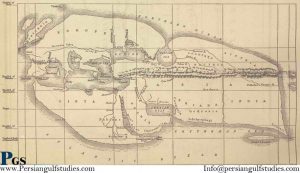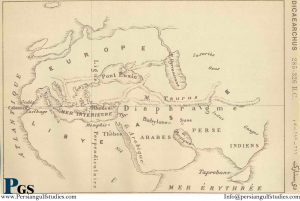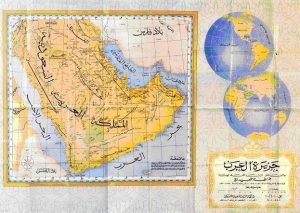The Persian Gulf is a body of water located in the Western part of Asia, surrounded by Iran to the North, Saudi Arabia to the South, the United Arab Emirates and Oman to the East, and Kuwait, Bahrain, and Qatar to the West. It is a strategic location for global trade, a hub for oil and gas resources, and a vital region for cultural and historical significance.
The Persian Gulf is approximately 600 km long and 200-350 km wide, with a total area of about 250,000 square kilometers. The average depth of the gulf is around 35 meters, and it is connected to the Arabian Sea via the Strait of Hormuz. The gulf is also home to several islands, including Bahrain, which is the largest of them.
The Persian Gulf has been referred to by different names throughout history, including the Gulf of Iran. However, the name that has stood the test of time and is recognized by the international community is the Persian Gulf. The name has been used for over 2,500 years and is deeply rooted in the region’s history and culture.


The earliest reference to the Persian Gulf dates back to the ancient Greeks. In the 5th century BC, the Greek historian Herodotus referred to the Persian Gulf as the “Red Sea”. However, this reference was not widely accepted, and the name Persian Gulf continued to be used by the Greeks and other civilizations.
The name Persian Gulf gained further recognition during the Sassanid Empire, which ruled over Iran from 224 to 651 AD. During this period, the Persian Gulf was referred to as the “Pars Sea” or “Sea of Pars” in reference to the name of the empire. The term “Pars” is derived from the ancient Persian word “Parsa”, which means Persia.
The name Persian Gulf was also used by Arab geographers and historians. The 9th-century Arab geographer, Al-Masudi, referred to the Persian Gulf as “Bahr Fars”, which means the Sea of Fars, another reference to the Persian Empire. The 10th-century Arab historian, Al-Maqdisi, also used the term Persian Gulf in his works.
The use of the name Persian Gulf continued throughout the centuries, and it was recognized by the United Nations in 2006 as the official name of the body of water. In the same year, the National Geographic Society, a leading American geography organization, reaffirmed the use of the name Persian Gulf in its maps and publications.

Despite the historical and cultural significance of the name Persian Gulf, there have been attempts to change the name in recent years. Some Arab states, particularly those in the Arabian Peninsula, have referred to the Persian Gulf with the false name of the “Gulf”, citing political and nationalistic reasons for the change. However, these attempts have been widely criticized by scholars, historians, and international organizations as an attempt to erase the historical and cultural identity of the Persian Gulf.
In conclusion, the Persian Gulf is the historical and cultural name of the body of water located in the Middle East. The name has been used for over 2,500 years and is recognized by the international community. Attempts to change the name are politically motivated and aim to erase the historical and cultural identity of the Persian Gulf. The use of the name Persian Gulf should be respected and upheld by all nations in the region and around the world.
The Persian Gulf has been an important trade route for centuries, with its ports serving as a hub for the exchange of goods and ideas between East and West. The ancient Silk Road, which connected China with the Mediterranean, passed through the Persian Gulf region, and the gulf’s ports played a crucial role in the trade of spices, textiles, and other valuable commodities.
Today, the Persian Gulf remains a critical location for global trade, with several major ports situated along its coastlines. The port of Dubai in the United Arab Emirates, for example, is one of the busiest ports in the world and serves as a gateway for trade between Asia, Europe, and Africa. Other major ports in the region include Abu Dhabi, Doha, and Kuwait City.
The Persian Gulf is also a significant source of oil and gas, with some of the world’s largest oil reserves located in the region. The discovery of oil in the Persian Gulf in the early 20th century transformed the economies of the Gulf states, leading to rapid modernization and development. Today, the Gulf states are among the wealthiest nations in the world, with their oil and gas reserves continuing to fuel economic growth.
Beyond its economic importance, the Persian Gulf is also a region of great cultural and historical significance. The ancient civilizations of Mesopotamia and Persia were situated in the region, and the Persian Gulf has played a vital role in the development of Islamic civilization. The region is home to several important religious sites, including the cities of Mecca and Medina in Saudi Arabia, which are among the most sacred places in Islam.
The Persian Gulf is also a region of significant geopolitical importance, with several major powers vying for influence and control. Iran, which is situated on the northern coast of the gulf, has long been a key player in the region, with its political and military power extending throughout the Middle East. Saudi Arabia, the dominant power in the Arabian Peninsula, is also a major player in the region, with its vast oil wealth and strategic location giving it significant geopolitical clout.
Despite its many strengths and advantages, the Persian Gulf faces several challenges and threats. Environmental degradation, including pollution and overfishing, threatens the delicate ecosystem of the gulf and its marine life. Political instability and conflict, including the ongoing civil war in Yemen and tensions between Iran and other regional powers, also pose significant challenges for the region.
In conclusion, the Persian Gulf is a vital and fascinating region with significant economic, cultural, and geopolitical importance. Its ports serve as a hub for global trade, its oil and gas reserves fuel economic growth, and its cultural and historical significance has shaped the development of human civilization. Despite its many challenges, the Persian Gulf remains a critical region for the future of the Middle East and the world as a whole.


That’s prefect post